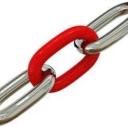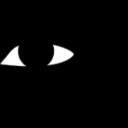Yahoo Answers is shutting down on May 4th, 2021 (Eastern Time) and beginning April 20th, 2021 (Eastern Time) the Yahoo Answers website will be in read-only mode. There will be no changes to other Yahoo properties or services, or your Yahoo account. You can find more information about the Yahoo Answers shutdown and how to download your data on this help page.
Trending News
Implicit differentiation ?
Two curves which intersect at a certain point are said to be normal to each other at
that point if their tangent lines at that point are perpendicular to each other. The circles (𝑥 −6)^2 + (𝑦 − 17)^2 = 100 and 𝑥^2 + 𝑦^2 = 225 intersect at the point (12,9).Show that the circles are normal to each other at that point.
Are you trying to show the slopes are the same? When I did it I got -(x-6)/(y-17) and
-x/y. giving me 2 different slopes.
I see now that you are trying to show they are perpendicular to each other, but I still get 1/4 as one slope and -4/3 as the other.
2 Answers
- la consoleLv 71 month ago
(x - 6)² + (y - 17)² = 100
x² + y² = 225
Point of intersection
(x - 6)² + (y - 17)² = 100
x² - 12x + 36 + y² - 34y + 289 = 100
x² + y² - 12x - 34y = - 225 → recall the other circle: x² + y² = 225
225 - 12x - 34y = - 225
- 12x - 34y = - 450
6x + 17y = 225 ← equation of the line that contents the points of intersection between the 2 circles
6x + 17y = 225
6x = 225 - 17y
x = (225 - 17y)/6
x² = (225 - 17y)²/6²
x² = (50625 - 7650y + 289y²)/36 → recall the other circle: x² + y² = 225 → x² = 225 - y²
225 - y² = (50625 - 7650y + 289y²)/36
36.(225 - y²) = 50625 - 7650y + 289y²
8100 - 36y² = 50625 - 7650y + 289y²
325y² - 7650y = - 42525
13y² - 306y = - 1701
y² - (306/13).y = - 1701/13
y² - (306/13).y + (153/13)² = - (1701/13) + (153/13)²
y² - (306/13).y + (153/13)² = 36²/13²
[y - (153/13)]² = (36/13)²
y - (153/13) = ± 36/13
y = (153/13) ± (36/13)
y = (153 ± 36)/13
y₁ = (153 + 36)/13 = 189/13 → recall the line: 6x + 17y = 225
6x₁ = 225 - 17y₁
6x₁ = 225 - 17.(189/13)
6x₁ = - 288/13
x₁ = - 48/13
→ Point (- 48/13 ; 189/13)
y₂ = (153 - 36)/13 = 9 → recall the line: 6x + 17y = 225
6x₂ = 225 - 17y₂
6x₂ = 225 - 153
6x₂ = 72
x₂ = 12
→ Point (12 ; 9) ← this is the given point
Recall the first circle:
(x - 6)² + (y - 17)² = 100
(y - 17)² = 100 - (x - 6)²
(y - 17)² = 100 - (x² - 12x + 36)
(y - 17)² = 100 - x² + 12x - 36
(y - 17)² = - x² + 12x + 64
y - 17 = ± (- x² + 12x + 64)^(1/2)
y = ± (- x² + 12x + 64)^(1/2) + 17
y' = ± (1/2).(- 2x + 12) * (- x² + 12x + 64)^[(1/2) - 1]
y' = ± (- x + 6) * (- x² + 12x + 64)^(- 1/2)
y' = ± (x - 6) / (- x² + 12x + 64)^(1/2)
y' = ± (x - 6) / √(- x² + 12x + 64) ← this is the slope of the tangent line (ℓ₁) to the circle at x
y' = ± (x - 6) / √(- x² + 12x + 64) → when: x = 12
y' = ± (12 - 6) / √(- 144 + 144 + 64)
y' = ± 6/8
y' = ± 3/4 → you can see on the drawing, that the slope is positive
y' = 3/4
Recall the first circle:
x² + y² = 225
y² = 225 - x²
y = ± (225 - x²)^(1/2)
y' = ± (1/2) * (- 2x) * (225 - x²)^[(1/2) - 1]
y' = ± (- x) * (225 - x²)^(- 1/2)
y' = ± x / (225 - x²)^(1/2)
y' = ± x / √(225 - x²) ← this is the slope of the tangent line (ℓ₂) to the circle at x
y' = ± x / √(225 - x²) → when: x = 12
y' = ± 12 / √(225 - 144)
y' = ± 12/9
y' = ± 4/3 → you can see on the drawing, that the slope is negative
y' = - 4/3
The slope of the line (ℓ₁) is (3/4).
The slope of the line (ℓ₂) is (- 3/4).
The product of these 2 slopes is (- 1), you can say that the line (ℓ₁) and the line (ℓ₂) are perpendicular.
…and the circles are normal to each other at that point x = 9.

- cmcsafeLv 71 month ago
Are you trying to show the slopes are the same?
No, we must prove that the product of the two slopes is -1
(condition of orthogonality between two lines)
1.
-(x-6)/(y-17) @ (12,9) we get m₁ = 3/4
-x/y @ (12,9) we get m₂ = -4/3
2
m₁*m₂ = -1
The two tangent lines are orthogonal this means that the two curves are normal to each other.




